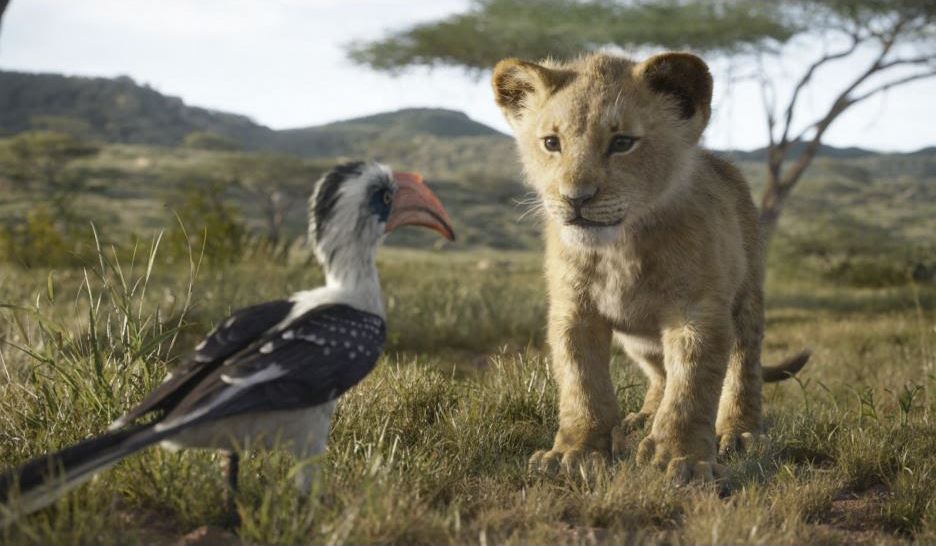Alum Andrew Jones’ work on ‘The Lion King’ gets him 4th Oscar animation nomination

(Courtesy of Walt Disney Studios Motion Pictures)
By Eli Countryman
Feb. 6, 2020 10:55 p.m.
Animation technology has taken more than a few steps forward in the decade since Andrew Jones won an Oscar for Best Achievement in Visual Effects for “Avatar.”
The alumnus’ work as the animation supervisor on the 2019 remake of “The Lion King” has earned him his latest – and fourth overall – nomination in the category, but he said the animation in the newest film is of a caliber that was completely unfeasible a decade ago. The remake’s sweeping 3D world is a far cry from the flat backdrops and characters populating its 1994 predecessor. Jones worked alongside director Jon Favreau and visual effects supervisor Robert Legato to create a life-like version of the original Disney film, which he said was only possible through the innovative use of today’s technology.
“It used to be impossible to render this much fur or this many individual hairs on a character,” Jones said. “Now, because computer speeds are so fast and render quality is so high, … directors can push the limits to where they want to take it with storytelling.”
[Related: Recent Rewinds: Movie sequels and remakes continue stories from one decade to the next]

Many of the advancements came through an elevated attention to detail in character and environmental designs, he said. The team created the 3D animals with accurate skeletal and muscular structures, adding everything from whiskers to fur to complete the ensemble. When paired with the animation programming, complex calculations help simulate natural bodily movement, said visual effects producer Barry St. John.
The programs also make it possible to recreate interactions between objects in realistic ways, he said. Since the original Disney classic was released, scientists have also closely studied natural processes, such as wind or running water, St. John said. They also devised formulas that help animators render life-like scenes detailing the interplay between variables like particles and hair collisions.
“When you animate a character walking through water, now you can actually run simulations about what would happen if that character’s leg is moving fast or coming down with (a certain) force, and you can actually simulate the water around that,” St. John said.
And the film’s focus on environmental detailing did not just stop with the aspects characters interacted with, Jones said. The environmental team worked to build a 3D world that could pass as real, he said, with programs calculating minute details from light refraction down to the movement of individual blades of grass. St. John said the virtual world contrasts with traditional methods found in older films that instead relied on backdrops.
“(They) used to do matte paintings behind the characters that had perspective drawn into the painting,” St. John said. “But on this film, we actually created geometry all the way out into the distance so that the lenses would behave as they would in real life.”
Animation does not usually involve camerawork, but visual effects animation coordinator Yamato Cibulka said advancements in technology allowed the crew to shoot the film in the virtual space they created. The process involved previsualization – the use of unfinished, simplified re-creations of scenes – that directors could play with to lay down tracking in ways that mimicked live-action camerawork.
[Related: Album review: Beyoncé celebrates African culture and new film in ‘The Lion King: The Gift’]
Because the program’s capabilities were relatively new, Cibulka said part of the animation timeline involved trial-and-error tactics along with plenty of troubleshooting to ensure a quality that met everyone’s expectations. Jones said Disney’s focus on natural virtual camerawork during the previsualization process for “The Lion King” expanded the scope of what visual effects animation typically encompasses.
“We had a virtual reality set up where we could be on the Pride Lands in a kind of game animation style … and you can choose all your angles and camera coverage,” Jones said. “(Our work) was trying to reach new levels of realistic animation and realism in terms of camerawork.”
But the new film came under scrutiny for its close adherence to the original movie. However, Jones said the new rendition’s depiction of almost-real animals sharply diverges from the anthropomorphic qualities of its predecessor. The animals’ mouths don’t move in humanized ways, instead only in accord with what their respective bone structures could allow. Such accurate reimagination gives the film a new light by utilizing cutting-edge animation practices only available in the current age of technology, he said.
“A lot of people ask why make it if we’re just going to do a beat-for-beat remake,” Jones said. “It’s like asking a band why they cover a song: It’s an amazing song and there’s multiple iterations of it (that are) all to be appreciated in different ways.”


